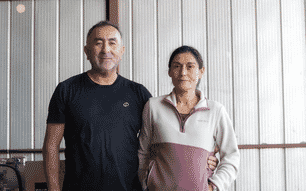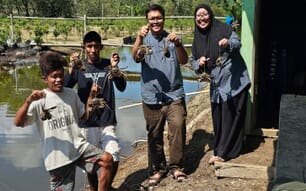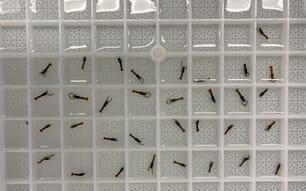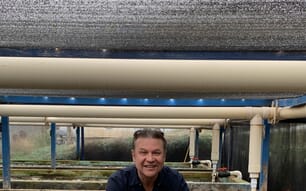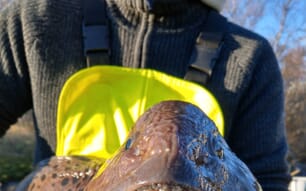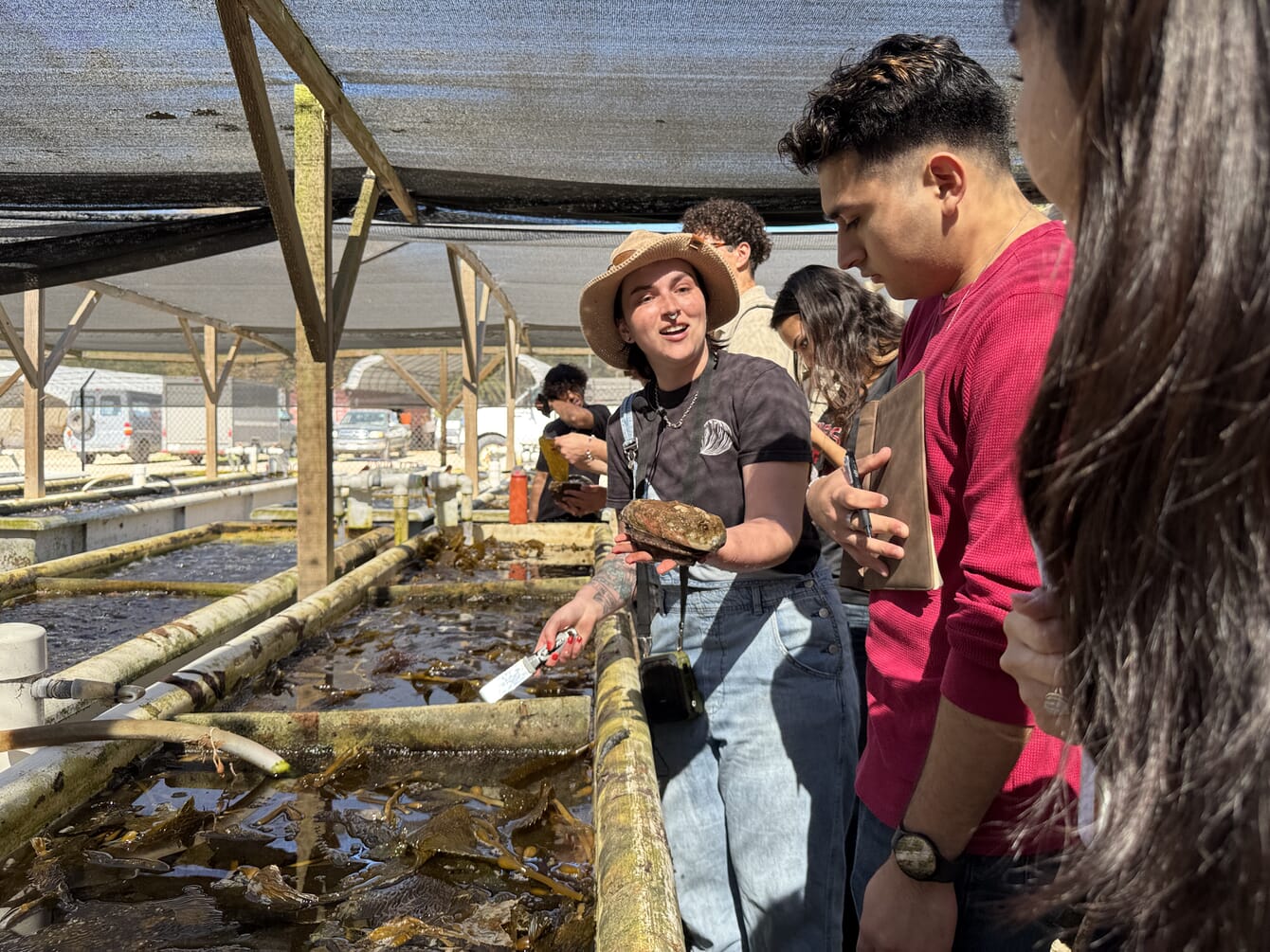
© Cultured Abalone
On the Pacific seafloor, millions of purple sea urchins - Strongylocentrotus purpuratus - are munching down California’s kelp forests. A native species, their population exploded in the 2010s after their main predators, the sunflower sea stars, died off and the kelp forests – already plagued by acidification effects and marine heat waves – were particularly susceptible to predation.
The effect has been drastic: in one 350 kilometre stretch, an estimated 96 percent of California’s kelp forests died off. While this went largely unnoticed by the state’s population, concerned marine scientists, recreational and maritime businesses sounded the alarm. And one Santa Barbara-based business, Cultured Abalone, decided to fight back.
“California's seen a huge loss in the wild kelp population, and part of that is due to an overabundance of purple sea urchins,” explains Andie Van Horn, the company’s tour manager.
Growing unchecked, the urchins “completely remove kelp forest areas, which creates a loss of habitat, loss of biodiversity, loss of food source,” adds Von Horn.
Five years ago, in a bid to save California’s remaining kelp forests, Cultured Abalone began ranching these urchins.
“Urchin ranching represents a major win-win opportunity by incentivising more harvest of an overabundant purple urchin population, resulting in restored kelp forests and diversified working waterfronts,” explains Frank Hurd, project director for the Oceans Program at The Nature Conservancy.
Part of Hurd’s job is working with coastal businesses on creating urchin ranching programmes so that the pressure on wild kelp forests can be alleviated.
“We’ve been working toward a future where more urchin ranching operations spring up across the west coast to address this issue at scale and deliver benefits to people and nature,” Hurd explains.
Piggybacking off their long-standing abalone infrastructure, which was first established in the 1980s, Cultured Abalone set up urchin ranching tanks five years ago. The urchins are harvested from Santa Barbara Channel by local divers who are paid $4.50 a pound. Cultured Abalone is a 20-40 minute drive “depending on the day in traffic from where our farm is. So they're not up out of the water too long,” explains Andie. They are then brought directly to their premises, which is important, as urchins cannot travel too far outside water.
Cultured Abalone has 10 tanks, each stocked with around 1,000 urchins and 1,000 gallons of fresh seawater that is piped in straight from the Pacific. They feed them fresh wild kelp that is harvested from Santa Barbara Channel no more than 24 hours previously.
In addition to working to help California’s kelp forests, a keystone marine ecosystem, ranching urchin complements their existing abalone business, as they can sell the ranched urchins in only ten weeks. Having two different income streams helps to diversify their business.
“It is 100 percent easier to ranch urchins” [than raise abalone], says Van Horn, in part because they are not growing the former from larval stage, when they are the most fragile. When divers remove the urchins, they are already at market size.
“We're just fattening up the insides,” says Van Horn. “When they're in those urchin barren sites, once they've totally removed the kelp, they can actually persist there with years without really a strong food source… we call them zombies.”

© Cuktured Abalone
A bustling abalone business
For their abalone business, which was started in 1989, they keep adult broodstock, so they are not reliant on wild stocks, explains Van Horn. After spawning they fertilise the eggs, allowing them to develop in incubators for a week, until they are settled into hatchery tanks, where they are fed microalgae.
In the hatchery, the abalone grow for six months in temperature controlled, filtered seawater, until they are brought outside to intermediate tanks. There they are switched to feeding on red tumble cultured seaweed and live in unfiltered seawater. After one to two years in the intermediate zone, they are moved into racks where they are fed wild-harvested giant kelp for at least a year. Then, when they reach ¼ pound, they are ready for harvest.
Cultured Abalone sells a variety of sizes, up to their “Balthazar”, at a gargantuan 2.5 pounds, which they take over ten years to reach.
Although “zombie” urchins are an issue for at least 350 kilometres of California’s coastline, there are only a handful of operators that could scale up a business the same way that Cultured Abalone did, as California Coastal Commission has not issued any new permits for pumping seawater since the 2010s. For their businesses – abalone and urchins – Cultured Abalone pipes in around 2.3 million gallons of seawater a day.
But Cultured Abalone is on the lookout for one destructive element: the black spot. If it occurs, it moves from “urchin to urchin” says Andie, and will make their spines fall off. So, if black spot is detected, infected urchins are put into quarantine.

© Cultured Abalone
Marketing “purple hotchis”
Another hurdle for the company was marketing. Red urchins, which are also native to California, are considered a delicacy in Japan and many red urchin harvesters ship directly there. But purple urchins are much less known, despite having a very similar flavour.
Focusing on growing an American market, rather than shipping to Japan, Cultured Abalone decided to brand their urchins as “purple hotchis”. They sell them for between $7 to $10 apiece, depending on the order size, mainly to restaurants across the country.
“We hand sell these urchins to our customers and tell the story of what Cultured Abalone is doing to make these popular table fare in an effort to save our kelp forest,” explains Paul Osborne, chief operations officer at Santa Barbara Fish Market, in an email. They started selling them last year, and Osborne says that their “customers love the purple hotchi urchins. The flavour is sweeter and more delicate than the red sea urchins.”
Alexander James Bollinger, executive chef at El Encanto has been buying the purple hotchis since the programme started five years ago. In an email, he said that, “Santa Barbara is world-renowned for its urchins – exporting almost 80 percent of its annual catch oversees. When guests of the hotel see it on the menu they are always inquisitive as to what it is and are pleasantly surprised once they are able to enjoy it.”
Although Bollinger does not think that many guests understand the impact of Cultured Abalone’s purple urchin programme, and their mission to save the kelp forests, he says the hotchis benefits from being local and by association with the well-known brand of Santa Barbara’s red urchins. Plus, he “personally loves the vegetal qualities and briny sweetness it has versus a regular Santa Barbara urchin.”
In the five years since they started ranching urchins, business has been picking up and Cultured Abalone now sells at least 250 pounds of them a month across the United States.
Cultured Abalone also works to introduce new customers to the urchin. During their summer season they offer two tours of the farm every Saturday and one tour on Saturdays during the rest of the year. Van Horn, who leads the tours, says that after learning about purple hotchis and seeing them grow, customers will often pick up a few to bring home.
This season, Cultured Abalone will be working with University of California at Santa Barbara and Santa Barbara City College, as well as Get Hooked, a local Community Supported Fishery, to study what happens to the urchin barons after their urchins are removed. It will be the first scientific study on the subject.
“This project is just a way to diversify offerings our farm has,” says Van Horn “It helps a conservation issue but it's also a business move to be able to have a product you can sell on a shorter [time]scale.”
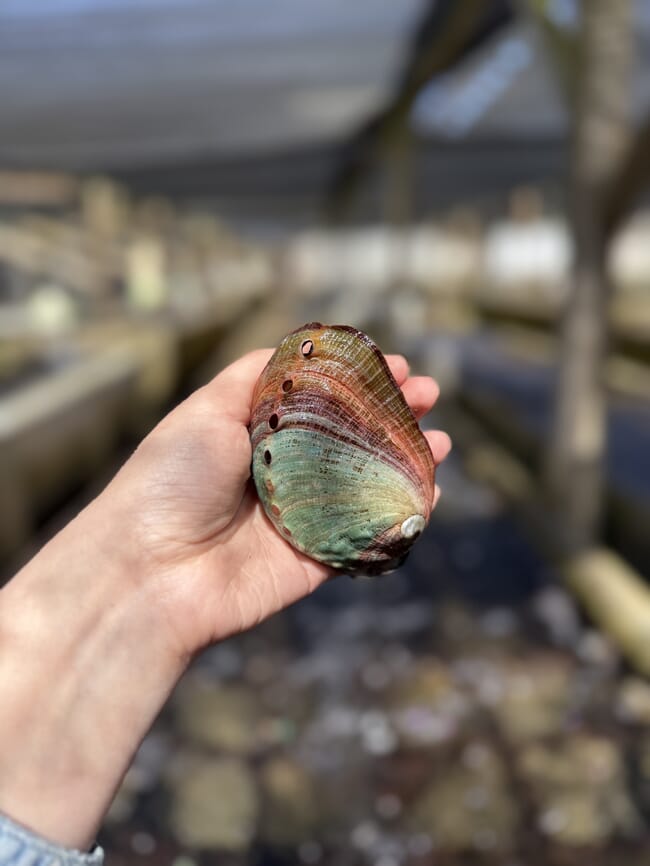
© Cultured Abalone


